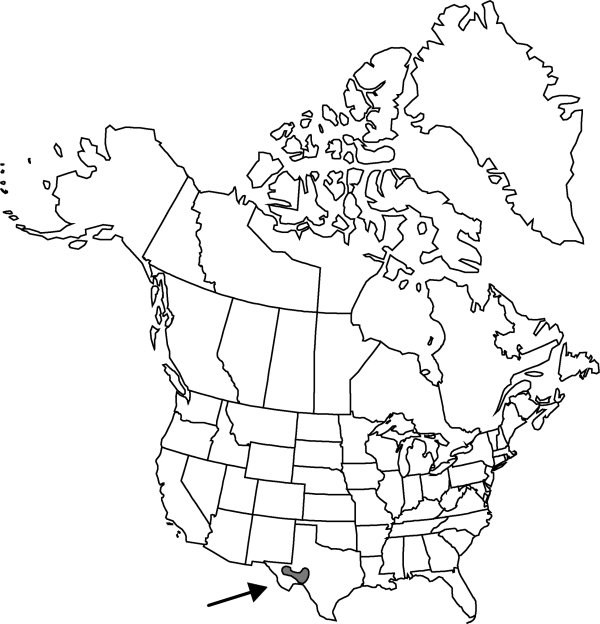Opuntia strigil
Proc. Amer. Acad. Arts 3: 290. 1856.
Shrubs, erect to sprawling, to 1 m. Stem segments not easily detached, green, flattened, obovate to circular, 10–17 × 8.5–14.5 cm, nearly smooth, glabrous; areoles 7–10 per diagonal row across midstem segment, oblong to elliptic, 3–5 × 2.5–3.5 mm; wool yellowbrown to brown, aging gray. Spines 5–8 (–10) per areole, best developed in distal areoles, usually reflexed, spreading or some erect in marginal areoles, redbrown (often with darker annular rings) with yellow tips, aging blackish, straight or weakly curved, not or slightly flattened near bases; central spines 1 (–2), much longer and stouter, ± acicular, 10–40 mm. Glochids crowded in crescent at adaxial edge of areole and subapical tuft, radiating and well developed in old stem segments, yellow, to 3 mm. Flowers: inner tepals cream to lemon yellow, orangish abaxially on midvein areas, broadly spatulate-apiculate, 20–30 mm; filaments cream-yellow; anthers pale-yellow; style pale cream; stigma lobes pale greenish yellow. Fruits red, subspheric, 15–28 × 12–23 mm, fleshy, glabrous, spineless; umbilicus 4–5 mm deep; areoles 24–36. Seeds tan, subcircular to reniform, flattened, warped, 3–4 × 2.7–3.5 mm, 2 mm thick; girdle protruding 0.5–0.8 mm. 2n = 22, 44.
Phenology: Flowering spring (Apr–May).
Habitat: Desert scrub, limestone hills and plains
Elevation: 900-1400 m
Discussion
Opuntia strigil is reminiscent of a brown-spined form of O. chlorotica.
Selected References
None.
